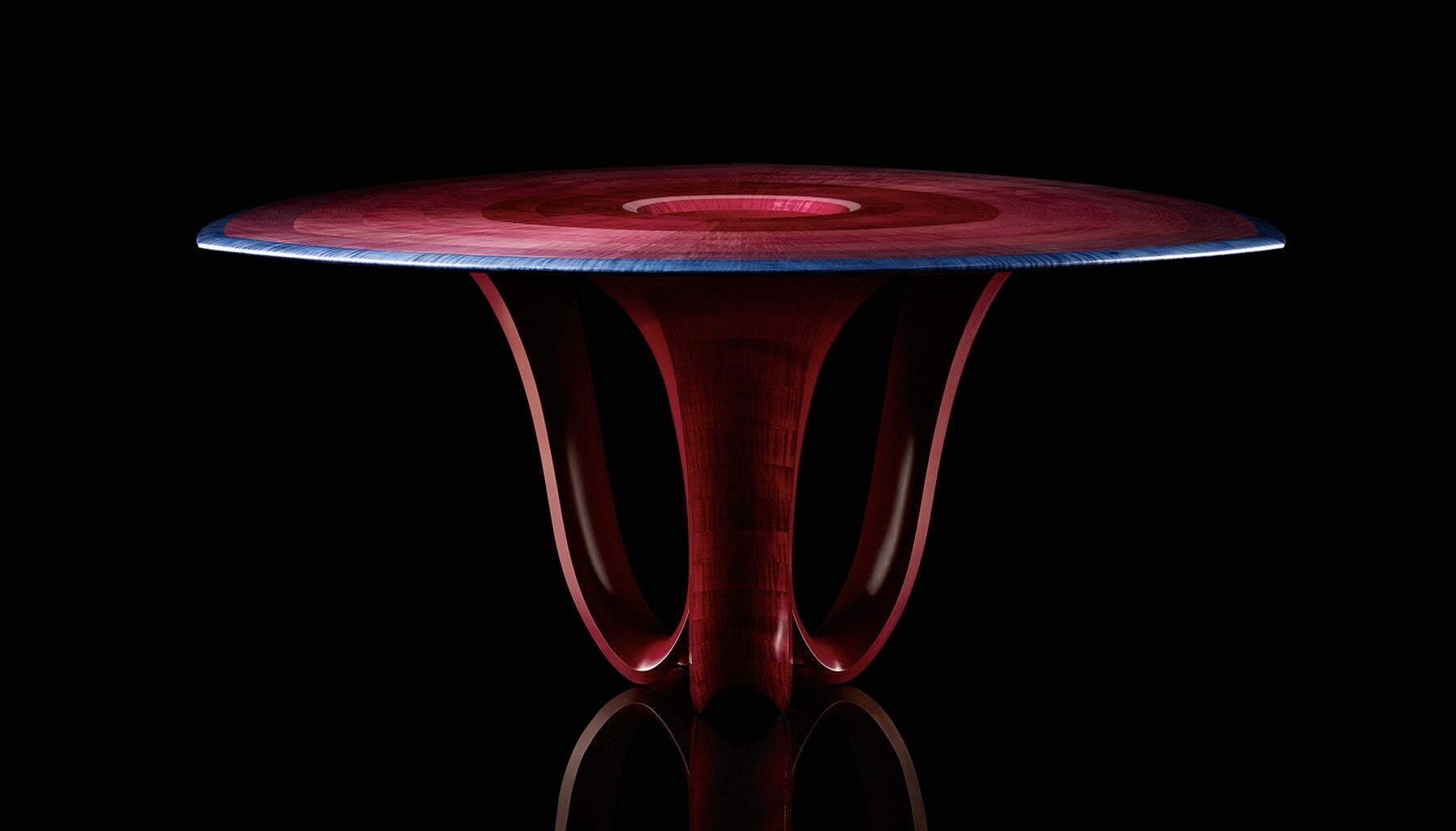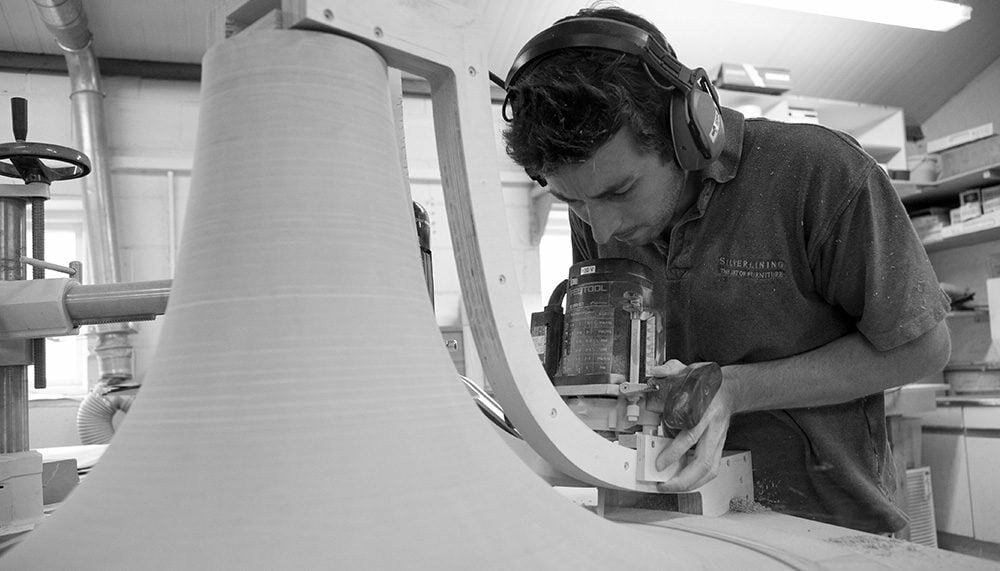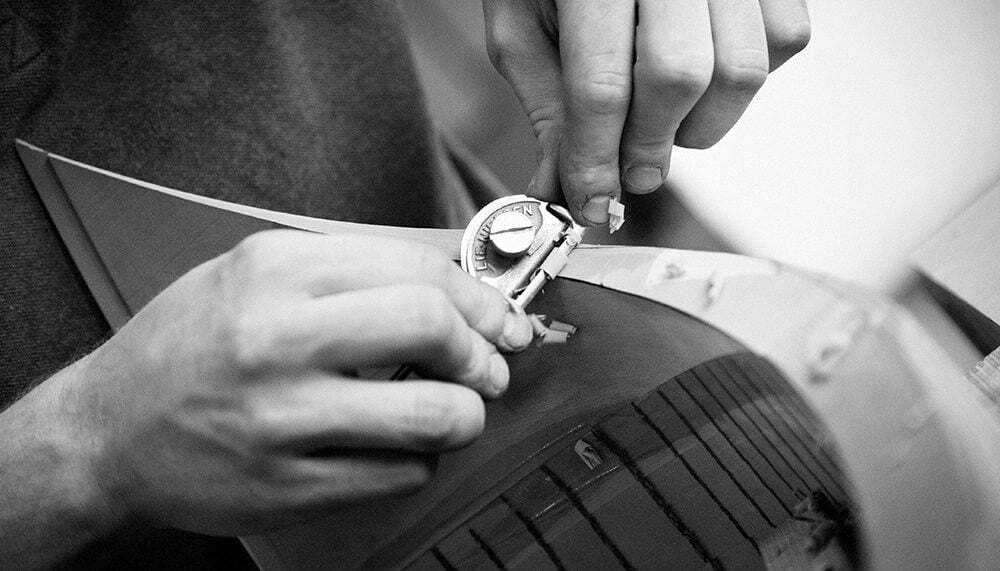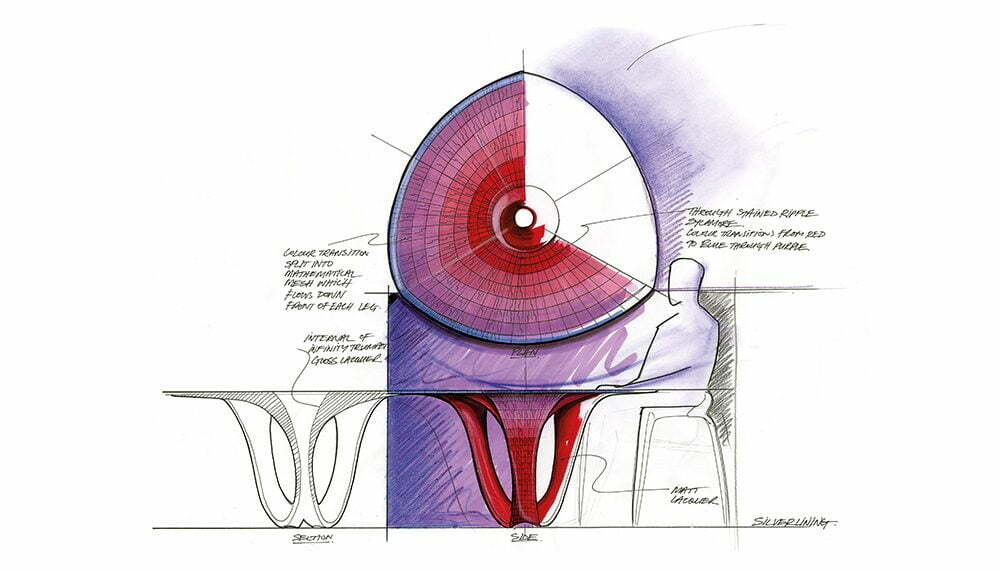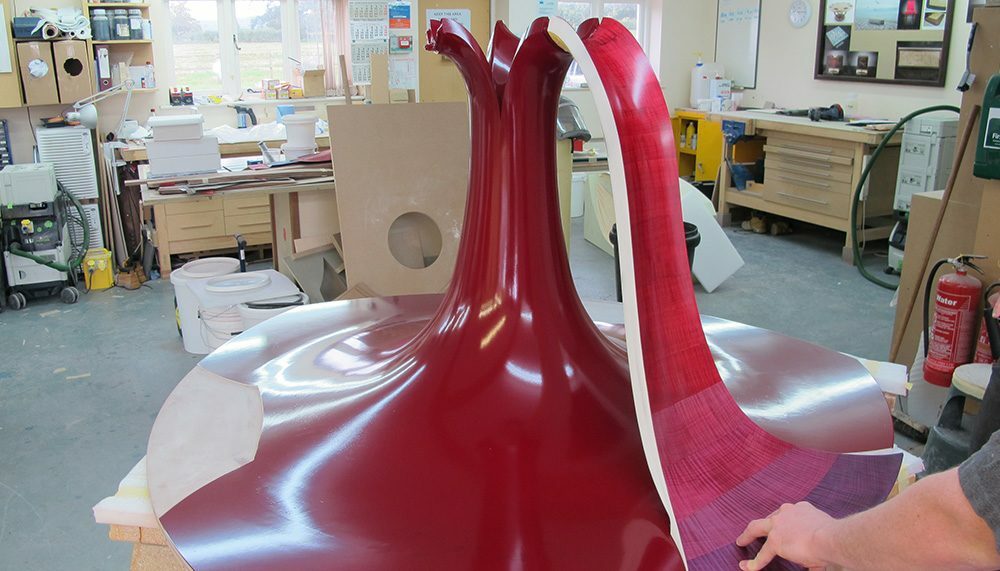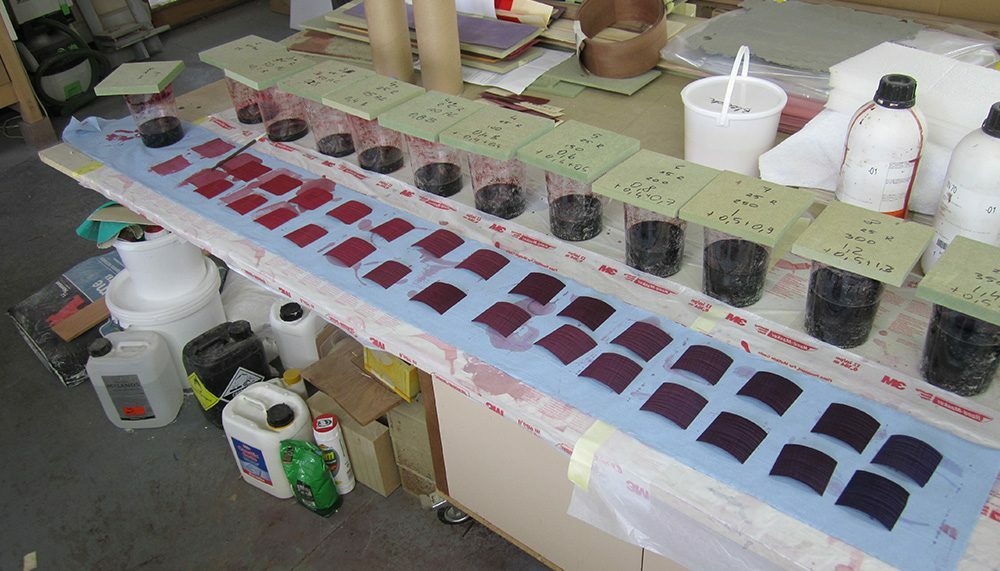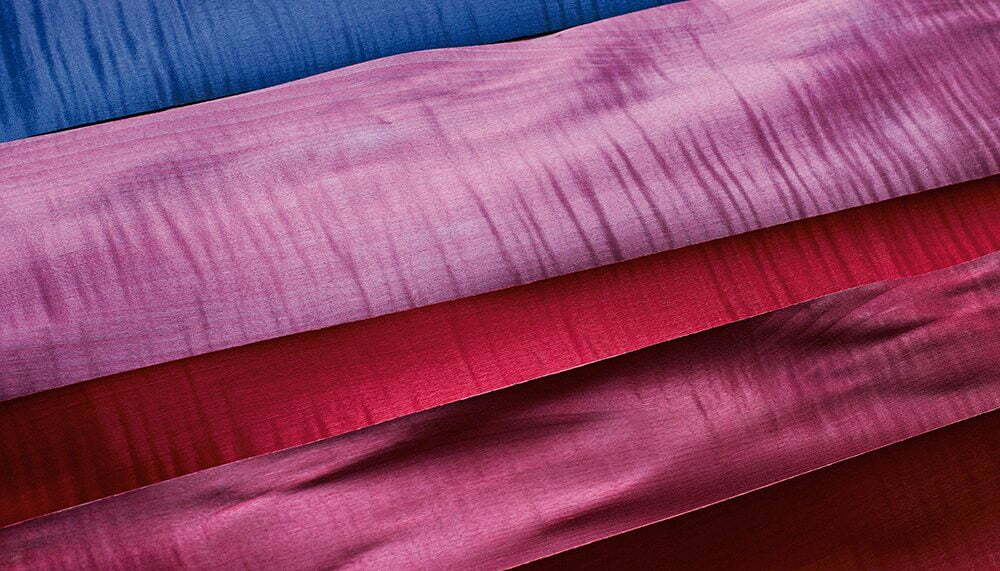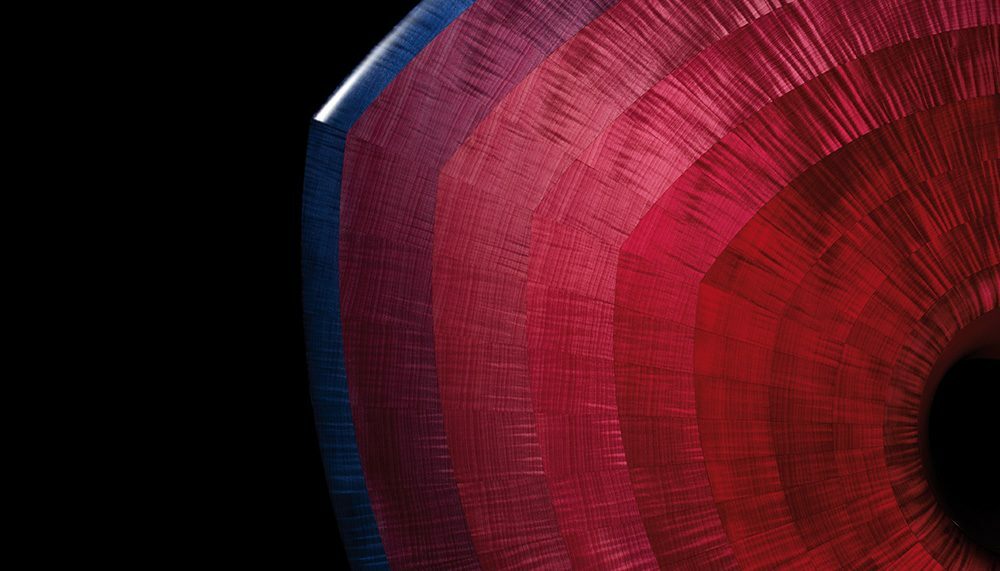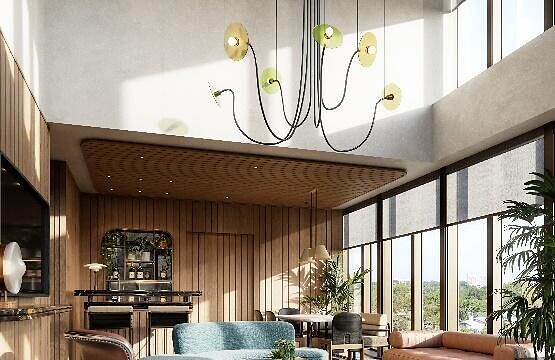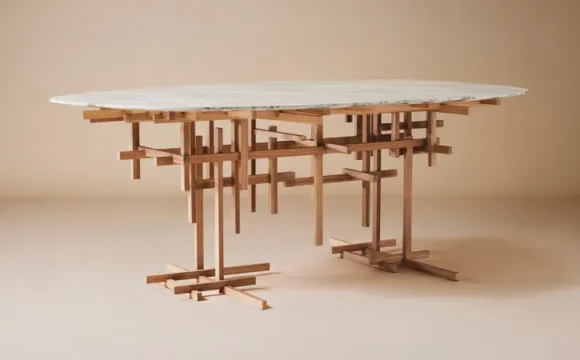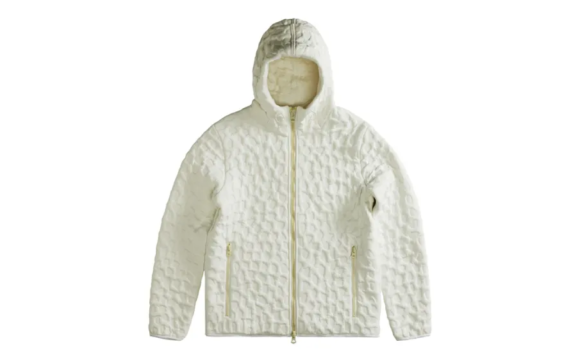BESPOKE FURNITURE AT ITS BEST
“When the client first approached us she said she wanted a functional piece of art, which somewhat left me feeling uneasy," admits Mark Boddington, the founder of Wrexham, UK-based bespoke furniture makers Silver Lining. “I think furniture should have a real use – but we embraced the idea of making something sculptural, timeless yet 21st century." The company’s Infinity Table now takes pride of place in her hallway. And although it embodies the traditional craft skills that Boddington was taught – he trained with the esteemed John Makepeace – it also takes the whole idea of furniture making forward, not least because its core is made of a very light, very strong composite material.
“The fact is that you can make shapes in composite that you can’t make well in wood – not that will last at least. And we wanted a design that drew people in – you want to know where that hole goes – as well as to prompt them to ask ‘how the hell did they do that?’" says Boddington, who launched his company 30 years ago and has made pieces for the diverse likes of Duke and Duchess of Westminster, the Sultan of Brunei, the Gettys, Rothschilds and Kevin Costner, with an average job (outfitting a house or yacht with all major pieces) costing an average £2 to £3 million. Just how he did that, he explains, was via an usual mix of old craft skills and computer science. “I don’t get the idea that using digital technologies is somehow not in keeping with excellent furniture making," he says. “It’s just the skill may also be in writing the code, in using the laser. Our biggest department now is Research & Development."
After initial sketches the Infinity table was made full-size in polystyrene over, in this case, an 11-month period – “it’s better not to rely on 3D computer renderings," Boddington explains, “because with a real object the human eye is so amazing it picks up what no computer can – and seeing something tactile also gives the client confidence." Given the green light, development then went to the creation of one third of the table – to test structural integrity – and then three composite, 1:1 moulds, plus one for the table top: a few more months’ work in all.
But perhaps the real beauty of the table lies in the wood veneer that then covered the composite. This is striking for two reasons: one is Silver Lining’s skill with colour. Rather than stain the wood – colour lost should the piece ever be sanded – it uses a laborious technique, taking a month, by which the veneer is bleached to white, neutralised and then dyed in such a way that the colour runs through its entire structure. That gives a truer colour, and more extensive options: the company has over 1,100 blues alone, which is what you need for colour graduation as varied as that on the Infinity table.
More impressive still is how the veneer was then fitted so accurately over the composite shell, its preparation utilising just one of the many techniques that Silver Lining has developed to, as Boddington puts it, “give ordinary and, importantly, sustainable woods a luxury finish", akin to the special velvet effect that it can achieve on plywood by shading – using a laser.
“Fitting the veneers is like tailoring," suggests Boddington. “You have to cut the veneers to precisely the right dimensions, down to the smallest part, in order to fit properly over those curves. They have to fit like a glove before glue gets anywhere near them – and that’s an art in itself." Small wonder than several car manufacturers have now expressed an interest in Silver Lining working on interiors for them. Fitting of the veneers is relatively speedy – over a week – but is then followed by two months of sanding, applying layers of lacquer, sanding again, buffing to a high gloss finish and polishing. And that’s including the inside of the table’s hole – “it takes a lot of time but it is possible to get down there," Boddington laughs.
As for the client’s reaction? “She thought it was amazing," recalls Boddington – which is maybe no surprise: Silver Lining has such a dedicated following that it has had perhaps just 30 clients in its 30 years. “I thought we’d achieved something extraordinary too, as well as getting a new confidence to use innovative methods on a larger scale. I once asked the Victoria & Albert Museum’s expert what made for the best furniture and he said it was a readiness to use the most advanced materials of the time, whether that be steam bent wood, tubular steel or whatever. I’ve always remembered that."
Indeed, Boddington has found over his three decades running his business that, in fact, the clientele has become more sophisticated in line with the increased application of new furniture-making methodologies. “Our style of living has changed, and people are much more design-aware now – nobody wants the old-style furniture that traditional making has provided. They want clean, less cluttered but still distinctive pieces. Clients are open to pushing boundaries, because often that’s what they’ve done in their own fields. And where bespoke furniture all used to go to western aristocrats, now it’s all going east."
That was certainly the case for more recent commissions. A second iteration of the Infinity table, for example, saw the meeting of crafts both of yesteryear and of tomorrow, taking the table’s composite form and then, as per the client’s request, covering it with marquetry, a rare art that uses tiny pieces of straw to create a pattern – in this case some 33,000 pieces of straw, brought together piece by piece over a gold resin foundation. “That was a challenge too," says Boddington. “But now we’re working on a piece that just wouldn’t be possible at all without combining old and new approaches. It’s a 17m, one-piece dining table for a client in the Middle East. You can only do that sort of thing composites. You wouldn’t find a single piece of wood that big. And if you did you simply wouldn’t be able to lift it anywhere…"
Silver Lining

